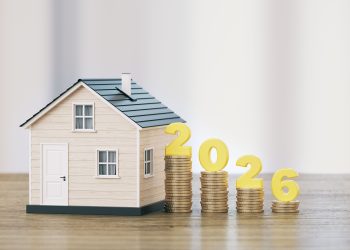 The 2012 outlook is improving modestly from a disappointing 2011. Economic growth picked up in the fourth quarter of 2011 to 2.8 percent and is expected to come in at 2.3 percent for 2012, up from 1.6 percent growth for all of last year, according to Fannie Mae’s (FNMA/OTC) Economic & Strategic Research Group. However, the year-end growth rate was due largely to a positive swing in business inventory growth, which is not indicative of underlying consumer demand or the overall health of the economy. Nevertheless, consumer spending improved modestly and manufacturing and services activity expanded at a strong pace. Importantly, labor market conditions continued to improve with nonfarm payroll job growth increasing nearly 250,000 across many industries, including construction. The unemployment rate dropped to 8.3 percent, down from 8.5 percent the month prior, as the large increase in employment outweighed a growing number of people joining the workforce—indicating a genuine improvement in the labor market. If we continue to see this level of positive data, the Group notes, the labor market may become an upside determinant for an improved outlook.
The 2012 outlook is improving modestly from a disappointing 2011. Economic growth picked up in the fourth quarter of 2011 to 2.8 percent and is expected to come in at 2.3 percent for 2012, up from 1.6 percent growth for all of last year, according to Fannie Mae’s (FNMA/OTC) Economic & Strategic Research Group. However, the year-end growth rate was due largely to a positive swing in business inventory growth, which is not indicative of underlying consumer demand or the overall health of the economy. Nevertheless, consumer spending improved modestly and manufacturing and services activity expanded at a strong pace. Importantly, labor market conditions continued to improve with nonfarm payroll job growth increasing nearly 250,000 across many industries, including construction. The unemployment rate dropped to 8.3 percent, down from 8.5 percent the month prior, as the large increase in employment outweighed a growing number of people joining the workforce—indicating a genuine improvement in the labor market. If we continue to see this level of positive data, the Group notes, the labor market may become an upside determinant for an improved outlook.
Housing also showed signs of improvement late last year with existing home sales rising in December for the third consecutive month. Indicators point to some good pickup in construction of apartment buildings and modest pickup in single-family construction in some locations. Overall, housing is expected to add to gross domestic product (GDP) for the first time in seven years, albeit by a very modest amount. Near-term improvement in housing sales is expected to be quite modest due to the very low current level of sales and continued expected declines in home prices, which remain a challenge to the housing market.
“Risks to the forecast are more balanced between the upside and downside since our January forecast,” says Fannie Mae Chief Economist Doug Duncan. “The economy appears to be more resilient than in previous months, and should be less vulnerable to shocks, including any spillover from the European sovereign debt crisis. However, economic growth will remain constrained by various headwinds, such as a potential spike in oil prices due to tension in the Middle East; an expected decline in net exports from the global slowdown; and an expected increase in fiscal drag, including the fading of federal spending from the stimulus and a decline in defense spending for operations in Iraq and Afghanistan.”
For more information, visit www.fanniemae.com.










